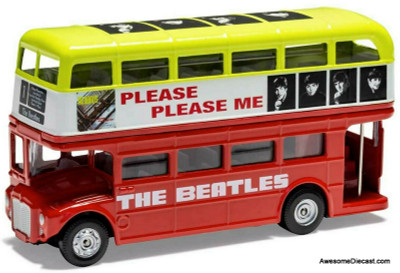The New Routemaster, originally referred to as the New Bus for London and colloquially as the Borismaster, is a low-floor diesel double-decker bus operated in London, England. Designed by Heatherwick Studio and manufactured by Wrightbus, it is notable for featuring a "hop-on hop-off" rear open platform similar to the original Routemaster bus design but updated to meet requirements for modern buses to be fully accessible. It first entered service in February 2012.
The original AEC Routemaster was used as the standard London bus type, with a rear open platform and crewed by both a driver and conductor. After half a century it was withdrawn from service (except for two heritage routes) at the end of 2005, one of which operated until 2019, in favour of a fully accessible one-person-operated modern fleet (including articulated buses), none of which featured a rear open platform. The withdrawal of the Routemaster became an issue during the 2008 London mayoral election with Boris Johnson elected mayor with a campaign pledge being to introduce a new Routemaster. Following an open design competition in 2008, Wrightbus was awarded the contract to build the bus at the end of 2009, and the final design was announced in May 2010.
The design for the new double-decker bus was inspired by the original AEC Routemaster, and features three doors and two staircases to allow accessible boarding. Unlike the AEC Routemaster, the new bus has a full front end rather than the protruding, bonneted "half cab" design, and a rear platform with a door that can be closed, rather than being permanently open. The layout of the new bus allows it to be operated by one person. The cost of each bus was £355,000 over the four-year procurement period. The last of the 1,000 New Routemasters was delivered in December 2017.
The final design has doors at the front, centre and rear.[8] The front and rear doors lead to staircases to the upper deck. The rear entrance initially had a platform and pole similar to the original Routemaster, with a door which was kept open for hop-on, hop-off operation when a conductor was on board. Readers for the contactless Oyster card used for payment for transport in London are provided at each of the three boarding points. Other types of ticket must be presented to the driver. This applied even when a conductor was on board, as the conductors did not take fares or check tickets.
Piccadilly Circus is a road junction and public space of London's West End in the City of Westminster. It was built in 1819 to connect Regent Street with Piccadilly. In this context, a circus, from the Latin word meaning "circle", is a round open space at a street junction.
The Circus now connects Piccadilly, Regent Street, Shaftesbury Avenue, the Haymarket, Coventry Street (onwards to Leicester Square) and Glasshouse Street. It is close to major shopping and entertainment areas in the West End. Its status as a major traffic junction has made Piccadilly Circus a busy meeting place and a tourist attraction in its own right. The Circus is particularly known for its video display and neon signs mounted on the corner building on the northern side, as well as the Shaftesbury Memorial Fountain and statue of Anteros (which is popularly, though mistakenly, believed to be of Eros).
It is surrounded by several notable buildings, including the London Pavilion and Criterion Theatre. Underneath the plaza is Piccadilly Circus Underground station, part of the London Underground system. It is similar to New York City's Times Square.
















